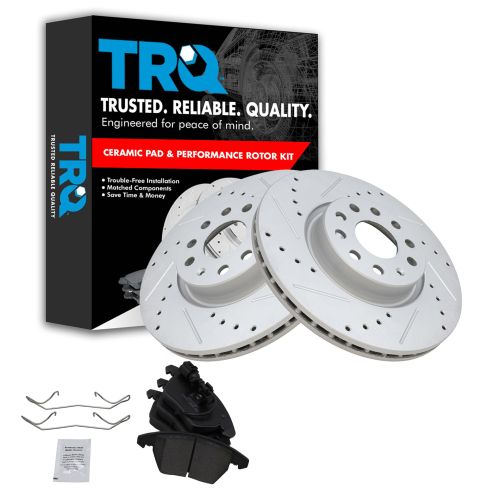1APBS00620-VW Audi Front Ceramic Performance Brake Pad & Rotor Kit TRQ Performance BKA12496

Replaces
2015 Audi TT Quattro with 12.28 in. (312mm) Diameter Front Rotors Front Ceramic Performance Brake Pad & Rotor Kit TRQ Performance BKA12496

Product Reviews
Loading reviews
5.00/ 5.0
9
9 reviews
Rotors and pads
May 29, 2017
Installed the cross drilled rotors and pads today, very nice parts and price was great. I think these are better than factory equipment! Very satisfied
Ron Green
Good product
November 12, 2019
Parts came on time boxes were a little damaged in shipment, the exterior box was fine the internal boxes had seen better days, but the product was undamaged. Everything fit as it should, and installation went as well as could be expected. Brakes have been on my vehicle for a couple of weeks have noticed an improvement over the stock brakes that were replaced. Trust the brakes well enough to allow my daughter to borrow the car. Not sure I could say more. Overall Good product, will buy again if needed.
Great brakes and rotors
November 21, 2019
Work great, cheap prices and easy install. Came with all you need.
Pick these over OEM.
February 10, 2020
Great quality rotors for the affordable price. No comparison to OEM/OEM Pricing. I would pick these over OEM everytime because there was no decline in performance, looks great, direct fit.
Slotted brakes
February 17, 2020
Im very pleased with the product , they are very well designed , they fit perfectly on the car . I can stop now in half the distance .
Packaging was imaculate and it came with everything you need
Great fitment and price!
June 22, 2021
Great price and love the performance so far. Everything fit great.
November 7, 2021
Great!!
Very Nice!
October 18, 2022
Easy install, great price and look and feel great!
August 4, 2023
Niceeeeee
Customer Q&A
No questions have been asked about this item.
Audi is a registered trademark of Audi AG. 1A Auto is not affiliated with or sponsored by Audi or Audi AG.
See all trademarks.














